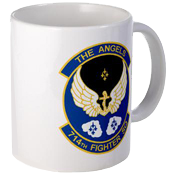The Origin of Dex’s Call Sign
Few Angels know the story behind Dex D’Felco’s call sign—even fewer know that he originally had a different one. It was the night before his first Aviation Preflight Indoctrination (API) exam. The exam was the first step in sending a student down the Naval aviator pipeline—do well on the exam, and a student would continue on the fighter track, do poorly, and a student could look forward to a career parking cargo transports. The six API exams were graded on a curve, and because every student wanted desperately to get on the fighter track, the scores were hyper-competitive—anything lower than a 98% likely wouldn’t cut it.
Dex, then, had spent the evening cramming hard. He hadn’t remembered crawling into bed, but he would forever remember what happened next. Having always been a light sleeper, Dex was particularly prone to fits of sleepwalking when he was at his most stressed. An hour or so after falling asleep, Dex burst out of his room, eyes half open, hollering gibberish. Running down the corridor, he bumped into the broad chest of one of the flight instructors, a tough-as-nails Marine who trained students on Seabirds. Coming to his senses, Dex knew enough to salute. But by the look in the instructor’s eyes, Dex knew that there was something wrong—something beyond simply accidentally bumping into a superior.
Looking down, Dex realized that he was standing in the bright corridor, stiff as a board, saluting the Marine instructor, while wearing nothing more than his little olive-drab briefs.
The story spread like wildfire, and soon after, he became known throughout the base as “Tarzan.” Despite his best efforts, Dex couldn’t shake the nickname for the duration of flight school. Even upon graduation, when he separated from his fellow students and was assigned to a fighter squadron, the nickname somehow followed him. Thus, it was inevitable that his official call sign became “Tarzan.”
It hadn’t taken Dex long to see action. It was Dex’s second mission as a “Gunslinger”—a routine combat patrol of the commerce lanes over Oranos, a sleepy frontier planet. A few minutes into the patrol, the lead Hornet had engine trouble and returned to base. Dex continued the patrol alone.
Halfway through the patrol, he received a distress signal on a universal channel. The pilot of a civilian light transport was in the middle of repairing his ether-drive when he’d spotted a number of unknown contacts on an intercept course. Dex identified the contacts—four P-61 Razors. The Razor was a fighter developed by Prackard Gunn Engineering for the FSA and had become a favorite among pirates.
Dex called in the contacts back to base and, without waiting for confirmation or further orders, raced ahead to intercept the pirates. The Razors, seeing the Hornet, turned from the transport, all four headed for Dex. Seeing Dex alone, the pirates were apparently eager to prove themselves, to brag that they had taken out a Hornet. As Dex prepared for a head-on engagement, two more contacts appeared behind him.
It was a pair of P-83 Lightnings, a fighter built for raw speed. The two Lightnings dropped from the ether behind his Hornet, released four Slammers each, then jumped back into the ether. It was a guerilla tactic known as a “bolter” maneuver. The P-83s, unlike the P-61s, were top-of-the-line fighters. Pirates, then, often weren’t willing to commit the expensive P-83s to a potentially dangerous dogfight. Rather, they made use of the Lightnings’ biggest asset—raw speed—dropping in, releasing missiles, and jumping out before anyone had a chance to blink.
Dex defeated the first barrage of missiles with micro-jammers. He had no answer for the second barrage, however, having used up all of his counter-measures. And four missiles were too many to gun down with his rear cannons. All Dex could do was turn his Hornet and pray.
As the missiles neared, Dex realized that weren’t tracking him though his turn. Either through pilot error—say, firing them before a lock—or a failure in the guidance systems, all four missiles had gone ballistic, flying harmlessly past.
Dex knew that his survival had been a miracle, but he also knew that it would take another miracle for him to continue surviving. Even as the two Lightnings jumped out, the four Razors had closed to cannon range.
Trying to even the odds, Dex locked a Slammer onto the nearest Razor—but when he punched the button, nothing happened. He pressed it again to the same negative result. His Hornet’s launchers were malfunctioning.
Without missing a beat, he switched to guns, targeting the closest Razor. Dex won the game of chicken, splitting the lightly-shielded Razor in two with his cannons. He then found himself running for his life, diving and turning, trying to keep the three circling Razors off his tail. When one of the Razors worked its way behind him, Dex reflexively snapped off a shot from his rear cannons, the bolts striking the Razor directly over the canopy. The shots tore through, instantly killing the pilot. The Razor, now little more than an empty shell, floated away from the battle.
The remaining two Razors were closing on his right, blasting away with their green cannon bolts. Dex turned into them, taking a few hard hits, but blowing past them intact. Dex and the two Razors rolled back into each other for another head-on pass. Dex succeeded in destroying yet another Razor with his pinpoint shooting, but his Hornet paid the price, the final Razor pummeling him during the pass.
After they merged, Dex and the final Razor again turned hard into each other. This time, though, they had both turned too quickly to meet each other head-on. Rather, they crossed each other again at an angle—a maneuver they kept repeating, scissoring back and forth. It was a deadly ballet. The first fighter to fail to execute the turns precisely would yield the angle to the other.
Dex, though, found himself in even more of a predicament. Even if he gained the advantage on the Razor, he wouldn’t be able to finish it off—his cannons had been knocked offline during the beating he’d taken on the last head-on pass. He could only hope that the Razor’s pilot hadn’t noticed.
Dex was, fortunately, winning the scissors. Six turns in, and it was clear that with every turn, Dex was inching closer and closer to having the angle on the Razor. On the seventh turn, Dex did something unexpected. Rather than continuing to gain the angle, he turned abruptly around, using the slight spacing he’d created to make a run for it.
It was a long shot. If the Razor turned sharply back, it would have a good chance of catching him before Dex escaped from its cannon range. But to Dex’s amazement, the Razor simply continued in the other direction. Both pilots, apparently, had danced long enough and were grateful simply to go home.
On the fringes of the sector, Dex saw the civilian transport jump away into the ether.
Returning back to base, young Lieutenant D’Felco was something of a hero. They called him crazy, a wild man, taking on six bandits by himself. Above all, his squad-mates were impressed that he’d scored all three of his kills with guns—and, what’s more, one with his rear cannons. It was soon determined that a fearsome warrior like Dex needed a more befitting call sign. It was in that moment that he became “Deadeye.”





